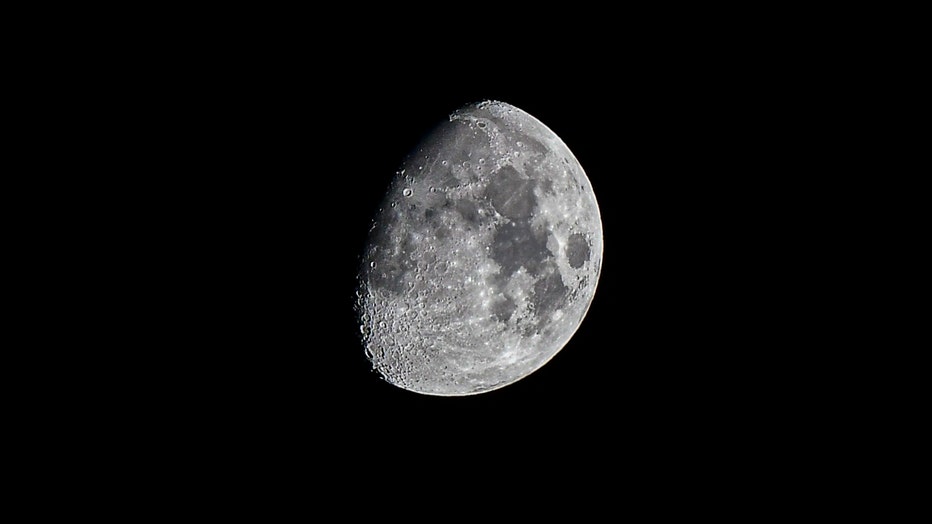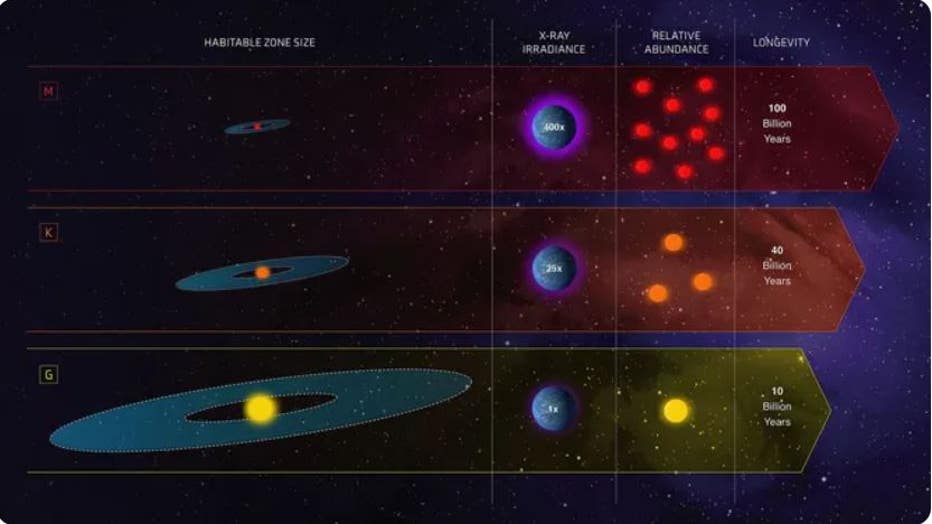Exoplanets with ‘terminator zones’ may be able to host life, study finds

An artistic depiction of a planet with a habitable terminator. (Ana H Lobo / FOX Weather)
A recent study shows that "terminator zones" on rocky planets outside our solar system may have the potential to harbor life.
Unlike Earth, these exoplanets have one side that experiences permanent daytime and another with permanent nighttime. The region where the two sides meet is called the terminator zone.
"Much like the equator is a band between the northern and southern hemisphere on Earth, the terminator is a band that separates the permanent dayside and the permanent nightside of these planets," said Ana Lobo, physics and astronomy researcher at the University of California at Irvine and lead on the new study.
An exoplanet’s terminator zone, along with its perpetual dayside and nightside, is made possible by the planet’s proximity to its star.
NASA FINDS ‘TURBULENT SKIES' WITH CLOUDS, WATER MOLECULES ON EXOPLANET
According to Lobo, planets included in their study closely orbit smaller, dimmer stars known as red or M-dwarf stars. The orbits are quite small, bringing the planets closer to their stars than Mercury is to the sun.
Because of this proximity, the star of a planet with a terminator zone has a strong gravitational pull on the planet, slowing down its rotation. The rotation becomes so slow that the same side of the planet constantly faces the star. Called tidal locking, this phenomenon is also seen with Earth and the moon, Lobo said.

Waxing gibbous moon is seen over Panama City on July 29, 2020.(Photo by Luis Acosta/AFP via Getty Images)
This tidal locking results in the permanent dayside and nighttime on these planets. The dayside is extremely hot and bombarded with radiation from the star it faces, whereas the nightside is extremely cold.
Where the two sides meet – the terminator zone – can remain at moderate temperatures favorable for life, according to Lobo.
In addition to causing tidal locking, this proximity to a star also brings the planets with terminator zones into a habitable zone within that solar system. This means that the planets exist in a region that’s not too close or too far away from their star, allowing for the possibility of the existence of some water on the planet’s surface.
ASTRONOMERS FIND 2 LIKELY ‘WATER WORLD’ EXOPLANETS

This infographic compares the characteristics of three classes of stars in our galaxy: M dwarfs, which are relatively faint and cool; G stars that are similar to our Sun; and K stars, which are less massive and cooler than our Sun. (NASA, ESA and Z.
While not abundant, the existence of water combined with temperate climates makes terminator zones likely environments to harbor life.
"Planets with terminator habitability are a great illustration of how a wide range of climates can coexist on a planet," Lobo said. "These planets would have scorching daysides, freezing nightsides, and yet could still have large habitable regions concentrated at the terminator."
"Other exotic climate scenarios could still be possible," she added. "We need to study them to increase our chances of finding and properly identifying a habitable planet in the near future."

